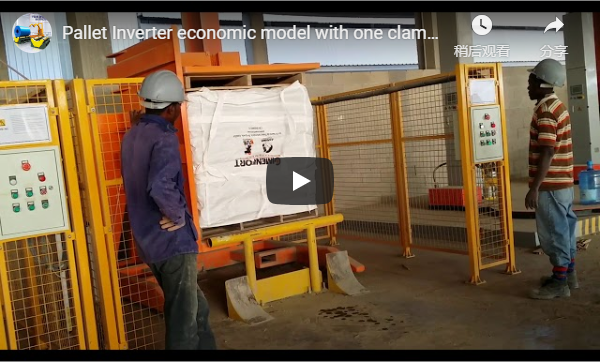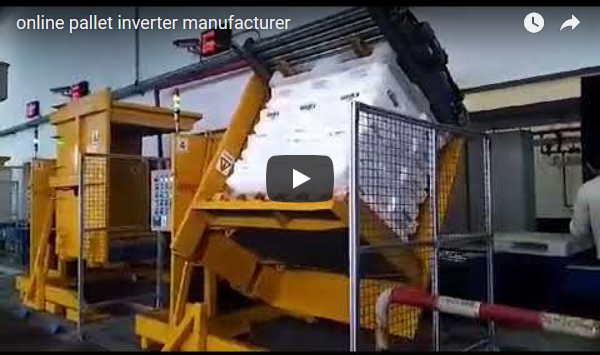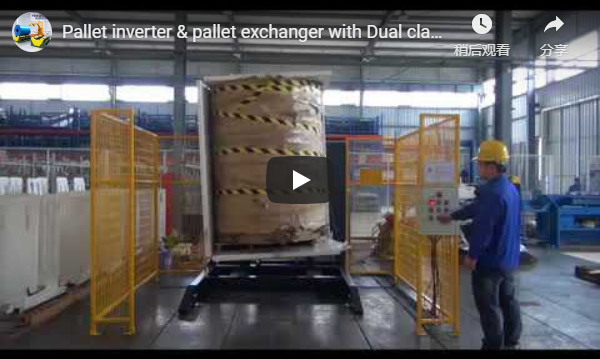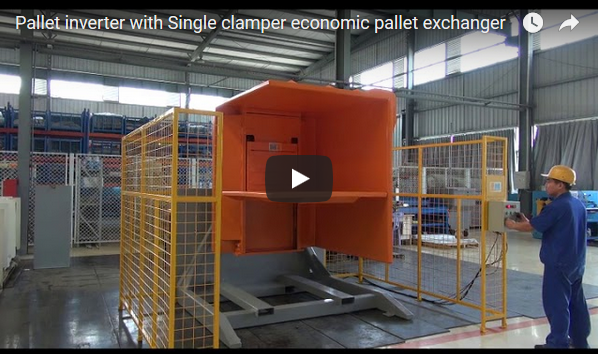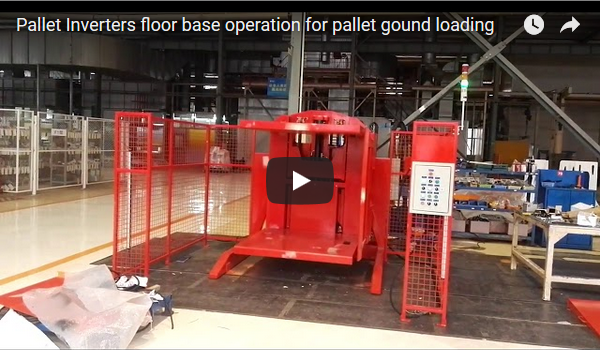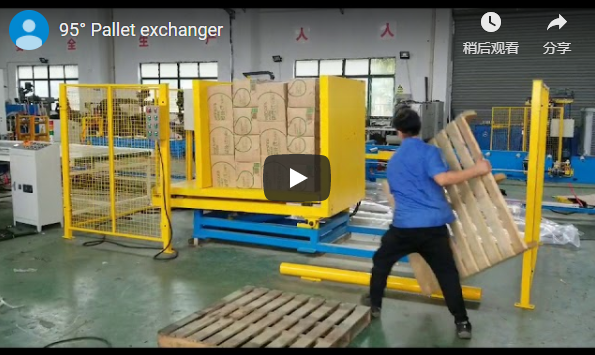Streamlining Load Handling: Understanding Pallet Exchangers and Changers
Efficient and safe material handling is paramount in modern manufacturing and logistics environments. Damaged pallets, the need to switch between different pallet types (wood, plastic, hygienic), or requirements to remove pallets entirely before storage or shipping present significant operational challenges. Manual methods are slow, labor-intensive, and carry inherent risks of worker injury and product damage. Pallet exchangers and pallet changers offer a mechanized solution to these problems, boosting efficiency and safety.
Watch this demonstration to see a pallet exchanger in action, showcasing its role in efficient pallet replacement:
1. What are Pallet Exchangers and Changers?
A pallet exchanger, often used interchangeably with the term pallet changer, is a piece of stationary or mobile equipment designed to transfer a full load of goods from one pallet to another, or to remove the pallet altogether. This process is achieved without requiring manual unloading and reloading of the product. Some designs, known as pallet inverters, achieve this by securely clamping the load and rotating it 180 degrees to allow pallet access.
2. Key Applications and Operational Benefits
Implementing a pallet exchanger system provides several tangible advantages:
- Enhanced Safety: Dramatically reduces the need for manual lifting and handling of heavy or awkward loads, minimizing the risk of musculoskeletal injuries among staff.
- Increased Efficiency: Significantly speeds up the pallet transfer process compared to manual methods, increasing throughput and reducing bottlenecks in receiving, warehousing, or shipping areas. Typical cycle times are often under a minute.
- Product Protection: Gentle, controlled handling minimizes the risk of damage to goods during the transfer process, which can occur frequently with manual handling.
- Operational Flexibility:
- Replace broken or damaged wood pallets quickly.
- Switch loads from standard wood pallets to more durable plastic pallets or specialized hygienic pallets required in food, pharmaceutical, or cleanroom environments.
- Transfer goods from incoming rental pallets (e.g., CHEP, PECO) to in-house pallets.
- Remove pallets entirely for floor stacking or specific storage systems.
- Cost Reduction: Lowers labor costs associated with manual handling, reduces product damage expenses, and can help manage pallet pool costs by enabling quicker turnaround or switching to captive pallets.
- Improved Hygiene: Facilitates compliance with hygiene regulations by allowing easy transfer to clean or sanitized pallets before entering sensitive production or storage zones.
3. Operating Principles
While specific designs vary, most pallet exchangers operate using one of the following core mechanisms:
- Clamp and Rotate (Inverter Style): The machine clamps the load (top and bottom, or sometimes sides) and rotates it 180 degrees. The original pallet can then be removed from the top (now inverted position), and the new pallet placed before rotating back. This is common for stable, unitized loads.
- Push-Pull System: One platform supports the original pallet and load while another platform holds the destination pallet. A pusher mechanism carefully transfers the load horizontally from one pallet to the other.
- Side Clamping and Lift: The machine clamps the load securely from the sides, lifts it slightly, allowing the original pallet to be removed and the new pallet to be positioned underneath before releasing the load.

4. Common Technical Specifications
When evaluating pallet exchangers, consider these typical specifications:
- Load Capacity: Commonly ranges from 1000 kg (approx. 2200 lbs) to 2500 kg (approx. 5500 lbs), though heavy-duty models exist.
- Pallet Size Compatibility: Designed for standard pallet dimensions (e.g., 1200x1000mm, 1200x800mm, 48"x40"), often with some adjustability or options for custom sizes.
- Maximum Load Height: Accommodates various load heights, typically up to 2000mm (approx. 78 inches) or more.
- Cycle Time: The time to complete one full pallet exchange usually falls between 30 and 90 seconds, depending on the model, load, and level of automation.
- Actuation: Primarily hydraulic systems for clamping and rotation/pushing forces, but fully electric models are also available.
- Control Systems: Range from simple manual push-button controls to semi-automated PLC (Programmable Logic Controller) systems, potentially integrated with conveyors or AGVs (Automated Guided Vehicles).
- Safety Features: Essential elements include interlocked safety guarding/fencing, light curtains at entry/exit points, hydraulic pressure relief valves, and accessible emergency stop buttons, complying with relevant safety standards.
5. Factors for Selecting the Right System
Choosing the appropriate pallet exchanger requires careful consideration of:
- Load Characteristics: Weight, stability, fragility, and dimensions of the typical loads being handled.
- Required Throughput: The number of pallets that need to be exchanged per hour or per shift.
- Pallet Types: The specific types and sizes of pallets being used (incoming and outgoing).
- Operating Environment: Available floor space, ceiling height restrictions, and integration with existing warehouse layouts and workflows (e.g., forklift access, conveyor lines).
- Budget: Initial purchase cost versus potential return on investment (ROI) through labor savings, damage reduction, and efficiency gains.
- Maintenance: Ease of maintenance, availability of spare parts, and technical support.
6. Integrating into Your Workflow
Successful implementation involves more than just installation:
- Operator Training: Ensure operators are fully trained on safe operating procedures, routine checks, and troubleshooting basic issues.
- Safety Protocols: Clearly define and enforce safety protocols around the machine's operating area.
- Workflow Placement: Strategically locate the machine to minimize travel distances and optimize flow within the receiving, staging, or shipping areas.
- Maintenance Schedule: Implement a regular preventative maintenance schedule as recommended by the manufacturer to ensure reliability and longevity.
7. Enhancing Warehouse Safety and Efficiency
Pallet exchangers and changers are valuable tools for modern material handling operations. By mechanizing the transfer of goods between pallets, they directly address safety concerns associated with manual handling while significantly improving operational speed and flexibility. Evaluating your specific needs against the capabilities and technical specifications of available systems will allow you to select a solution that protects your products, safeguards your employees, and optimizes your warehouse efficiency.

Back to front page: https://www.fhopepack.com/pallet-inverter/changer/

